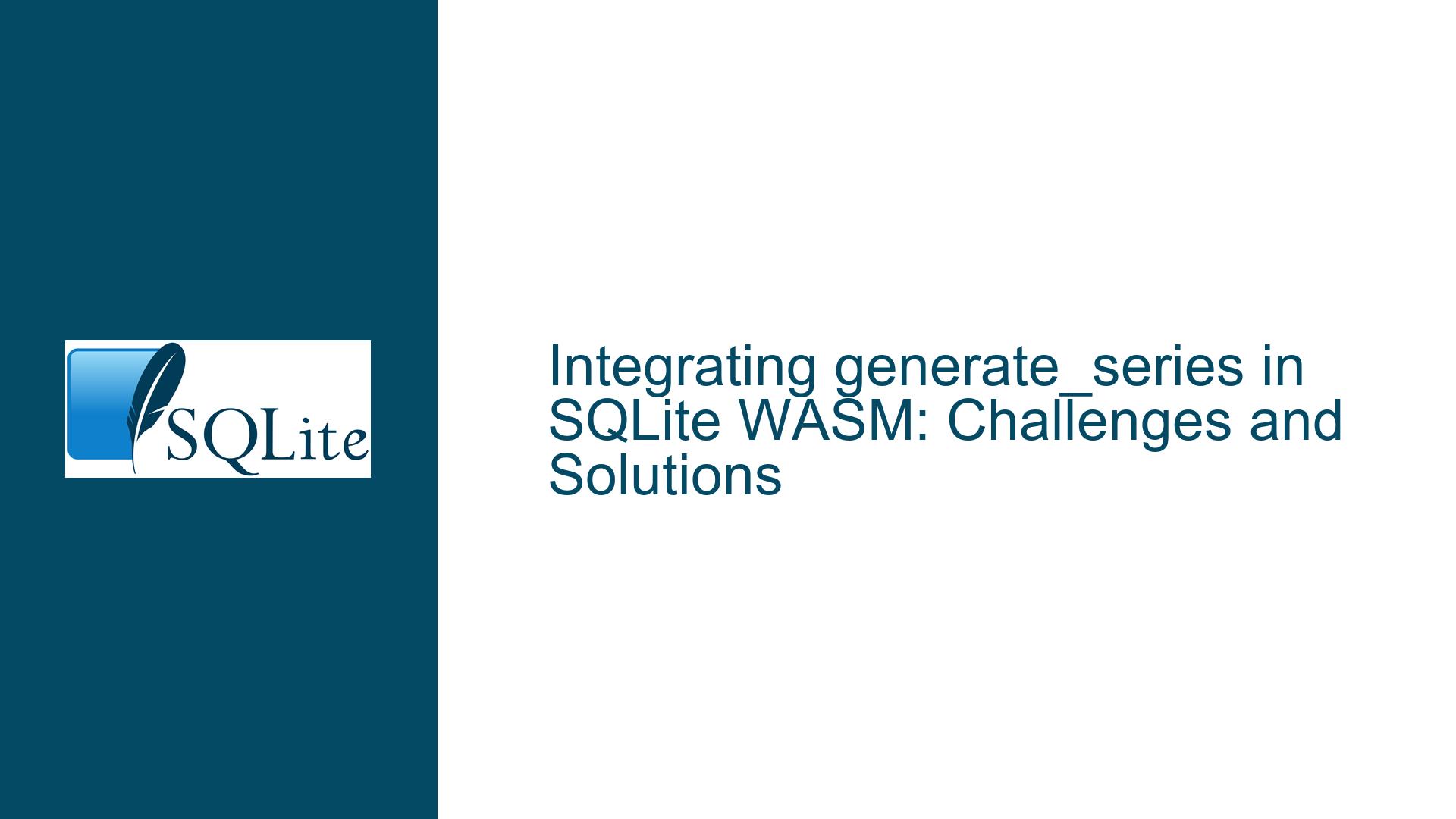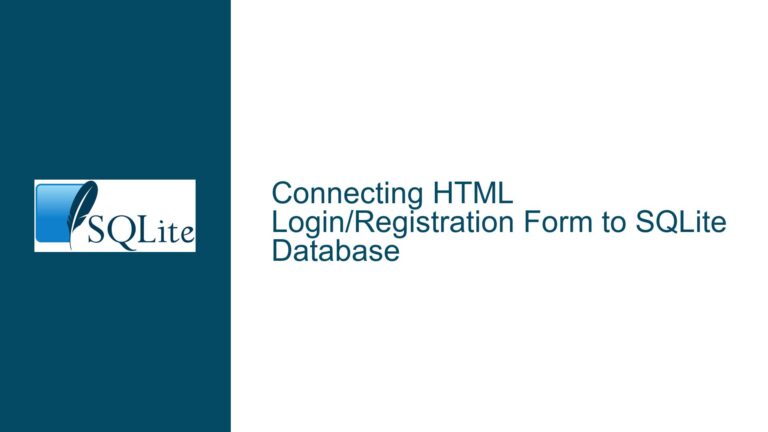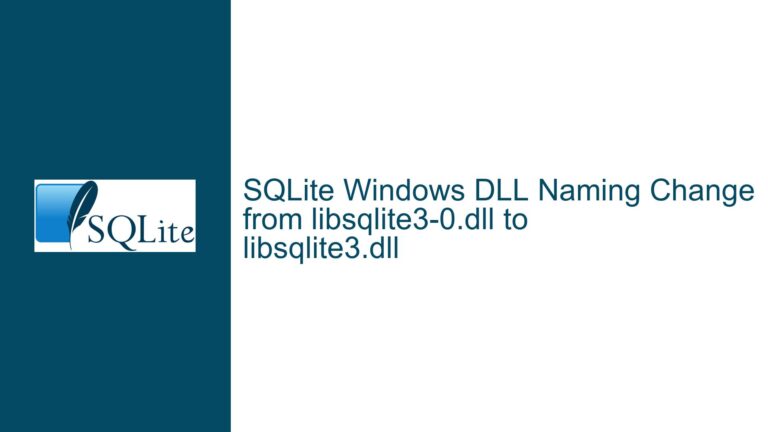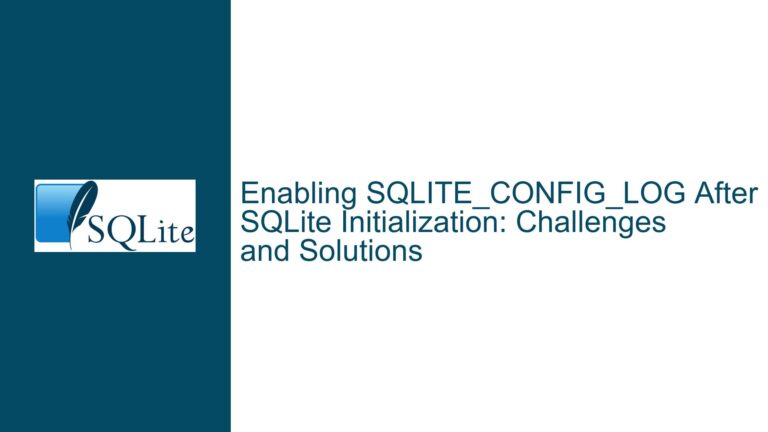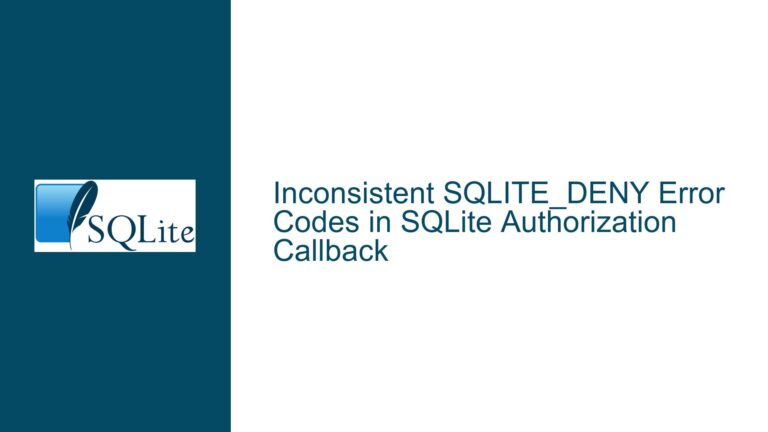Integrating generate_series in SQLite WASM: Challenges and Solutions
Understanding the Need for generate_series in SQLite WASM
The generate_series table-valued function is a powerful tool in SQLite that allows users to generate a sequence of numbers or dates, which can be particularly useful for creating synthetic data, iterating over ranges, or simplifying complex queries. However, integrating this function into the WebAssembly (WASM) distribution of SQLite presents unique challenges, especially when working within the constraints of a browser environment. The WASM distribution of SQLite is designed to be lightweight and portable, making it an excellent choice for web applications. However, this portability comes at the cost of reduced flexibility in terms of adding extensions like generate_series.
The primary issue revolves around the fact that the canonical WASM build of SQLite is based on the amalgamation, which includes only the core features of SQLite. Extensions like generate_series are not part of the amalgamation and thus are not included in the default WASM build. This limitation forces developers to either compile SQLite from source with the desired extensions or find a way to load these extensions at runtime within the WASM environment. Both approaches come with their own set of complexities, particularly for developers who are not familiar with the intricacies of SQLite’s build process or the WASM ecosystem.
Exploring the Challenges of Compiling SQLite with generate_series for WASM
Compiling SQLite from source to include the generate_series function is a viable but non-trivial solution. The process involves setting up a build environment capable of compiling SQLite into WASM, which typically requires tools like Emscripten. Emscripten is a complete compiler toolchain for WebAssembly, allowing developers to compile C and C++ code into WASM modules that can run in the browser. However, setting up Emscripten and configuring it to compile SQLite with custom extensions can be a daunting task, especially for developers who are not experienced with C/C++ build systems.
The first challenge is ensuring that all dependencies are correctly installed and configured. Emscripten itself has a number of dependencies, and getting everything set up correctly can be time-consuming. Once the build environment is ready, the next step is to modify the SQLite source code to include the generate_series extension. This involves adding the necessary C code for the extension to the SQLite amalgamation and ensuring that it is correctly integrated into the build process. The SQLite build system is highly customizable, but this also means that there are many potential points of failure, and a small mistake in the build configuration can result in a non-functional WASM module.
Another challenge is the potential for increased complexity in the build process. The SQLite amalgamation is designed to be a single-file distribution of the SQLite library, which simplifies the build process for most use cases. However, when adding custom extensions, the build process becomes more complex, as it requires additional steps to ensure that the extension code is correctly compiled and linked into the final WASM module. This added complexity can make it more difficult to maintain the build process over time, particularly if the project needs to be updated or modified.
Step-by-Step Guide to Adding generate_series to SQLite WASM
To add the generate_series function to the SQLite WASM distribution, developers must follow a series of steps that involve modifying the SQLite source code, configuring the build environment, and compiling the final WASM module. The following guide provides a detailed walkthrough of this process, assuming that the developer has a basic understanding of C/C++ programming and is familiar with the command line.
Step 1: Setting Up the Build Environment
The first step is to set up a build environment capable of compiling SQLite into WASM. This involves installing Emscripten, which is the primary tool used for compiling C/C++ code into WASM. Emscripten can be installed on most modern operating systems, including Windows, macOS, and Linux. The installation process typically involves downloading the Emscripten SDK and running a setup script to configure the environment.
Once Emscripten is installed, the next step is to download the SQLite source code. The SQLite source code is available as a single-file amalgamation, which includes all the necessary code to build the SQLite library. However, to add custom extensions like generate_series, developers will need to download the full source code distribution, which includes the necessary header files and build scripts.
Step 2: Adding the generate_series Extension to the SQLite Source Code
With the build environment set up and the SQLite source code downloaded, the next step is to add the generate_series extension to the SQLite source code. The generate_series extension is part of the SQLite source tree, but it is not included in the amalgamation by default. To add it, developers need to locate the source file for the generate_series extension (typically named generate_series.c) and include it in the build process.
The SQLite build system is highly customizable, and developers can add custom extensions by modifying the build scripts. The ext/wasm/GNUmakefile file in the SQLite source tree provides a template for adding custom C code to the WASM build. Developers can create a new file named sqlite3_wasm_extra_init.c and include the necessary code to initialize the generate_series extension. This file should define a function named sqlite3_wasm_extra_init that will be called during the initialization of the SQLite library.
Step 3: Compiling SQLite with the generate_series Extension
Once the generate_series extension has been added to the SQLite source code, the next step is to compile the SQLite library into a WASM module. This involves running the make command in the ext/wasm directory of the SQLite source tree. The make command will use the Emscripten compiler to compile the SQLite source code into a WASM module, including the custom code added in the previous step.
The compilation process may take some time, depending on the speed of the developer’s machine and the complexity of the custom code. Once the compilation is complete, the resulting WASM module will include the generate_series extension, allowing developers to use it in their web applications.
Step 4: Integrating the Custom SQLite WASM Module into a Web Application
With the custom SQLite WASM module compiled, the final step is to integrate it into a web application. This involves loading the WASM module in the browser and using the SQLite JavaScript API to interact with the database. The SQLite WASM distribution includes a JavaScript API that provides a convenient way to execute SQL queries and manage database connections.
Developers can load the custom SQLite WASM module using the import statement in JavaScript, and then use the API to execute queries that make use of the generate_series function. For example, the following code snippet demonstrates how to use the generate_series function to generate a sequence of numbers:
import sqlite3InitModule from './sqlite3.wasm';
sqlite3InitModule().then((sqlite3) => {
const db = new sqlite3.oo1.DB('/mydb.sqlite3', 'c');
db.exec('CREATE TABLE IF NOT EXISTS numbers (value INTEGER);');
db.exec('INSERT INTO numbers SELECT value FROM generate_series(1, 10);');
const result = db.exec('SELECT * FROM numbers;');
console.log(result);
});
This code loads the custom SQLite WASM module, creates a new database, and uses the generate_series function to insert a sequence of numbers into a table. The result of the query is then logged to the console.
Conclusion: Weighing the Pros and Cons of Custom SQLite WASM Builds
Adding the generate_series function to the SQLite WASM distribution is a powerful way to extend the capabilities of SQLite in web applications. However, this approach comes with its own set of challenges, particularly in terms of the complexity of the build process and the need for a custom build environment. Developers must weigh the benefits of having access to the generate_series function against the effort required to set up and maintain a custom build process.
For developers who are comfortable with C/C++ programming and have experience with build systems, compiling SQLite from source with custom extensions is a viable option. However, for those who are less experienced or who prefer a more straightforward approach, it may be worth considering alternative solutions, such as using a pre-built SQLite distribution that includes the desired extensions or finding ways to work around the limitations of the WASM environment.
Ultimately, the decision to add custom extensions to the SQLite WASM distribution will depend on the specific needs of the project and the resources available to the development team. By carefully considering the trade-offs and following the steps outlined in this guide, developers can successfully integrate the generate_series function into their SQLite WASM applications, unlocking new possibilities for data manipulation and query optimization in the browser.
